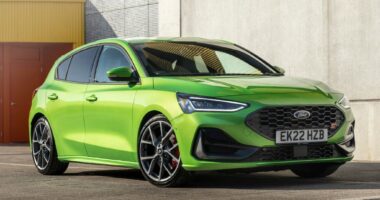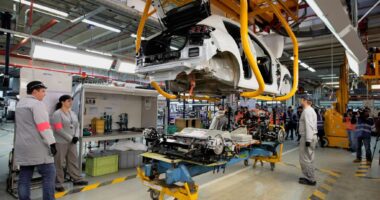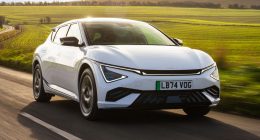Wherever you turn to for your daily motoring fix chances are the words ‘electrification’ and ‘hybrid’ will make an appearance at some point.
The figures quoted by manufacturers in terms of efficiency gains using this technology vary greatly but what they all tend to agree on is hybridisation offers superior efficiency and emission gains over equivalent petrol or diesel cars.
The first stepping stone into this new era of electrified car ownership is mild hybridisation which, in the case of a Ford Focus, relies on a 48-volt battery that is packaged under the front passenger seat.
The concept is simple enough and works in one of two ways. Firstly, the onboard system collects any kinetic energy that would otherwise be lost as heat under braking and redirects this to the lithium-ion battery where it is stored.
Secondly, as you accelerate and move up through the gears, this energy comes on stream and takes some of the strain off the engine meaning less fuel is combusted. The result is fewer emissions and better economy.
Or, at least, that is what the motoring press and the motoring public are being constantly told. But exactly how effective is mild hybrid technology in a 5-door family hatchback? Ford UK gave us the keys to an ST-Line X-spec Focus for a week so that we could have a stab at answering that question.
There is no science at play here, rather, we reset the car’s trip before we set off on our first journey. Let’s not forget: this is how 99% of motorists will judge how efficient their driving style is and how big a drink problem their pride and joy has over the life of running and owning it.
Most press cars that arrive at Drive NI tend to come with no more than a few thousand miles on the clock; our Focus was well travelled and had over 10,000 miles on the clock, so the engine and six-speed manual transmission had loosened up nicely for this particular test.
Over the next seven days, between spirited driving on open country roads to more sedate speeds and stop-start exercises at peak rush hour around town, we achieved 43.5mpg. Not over-extending the engine, timing gear changes right and anticipating your braking can help to the tune of adding three to four miles-per-gallon to that figure.
For the record, Ford claims that the mild-hybrid powered version of its Focus with the 1.0-litre, three-cylinder turbo petrol in 123bhp guise is capable of 52.3mpg. But then again engineers at the Blue Oval are not the only people wearing rose tinted glasses when it comes to discussing this particular subject.
As for how the energy recovery system works, a real-time gauge in the small TFT display shows you when energy is being sent to the battery during deceleration and how much torque is being sent forwards when accelerating. You can sense the added kick from the battery, although it isn’t the most seamless system and tends to have a lumpy quality to it, particularly in ‘Sport’ mode.
There are no complaints around the stop/start system on the Focus which has three levels: mild, moderate and severe. We switched to the latter and found that as soon as the clutch is pressed when nearing traffic lights, the engine immediately shut off. And because the engine is impecably refined, you barely notice it bursting back into life again with help from the 48-volt starter-generator.
So, in theory, mild hybridisation promises to save you money but based on our week-long experiment you shouldn’t expect a huge drop in fuel costs if you opt to go down this road.









